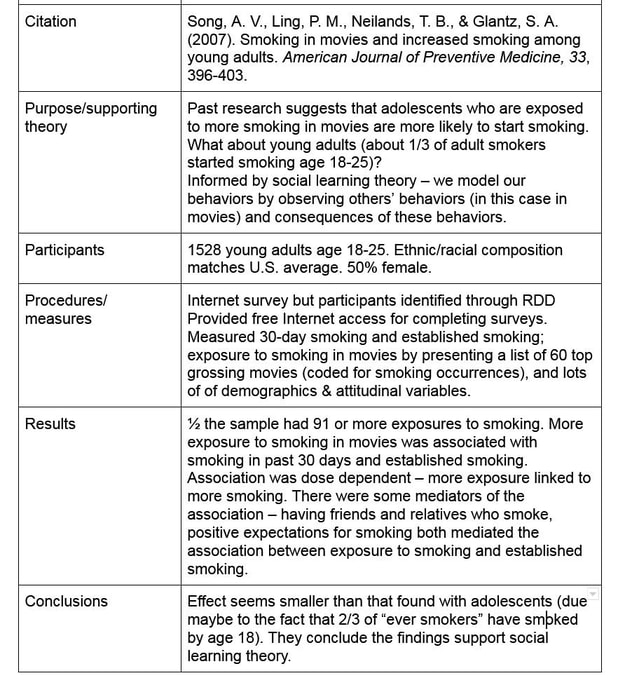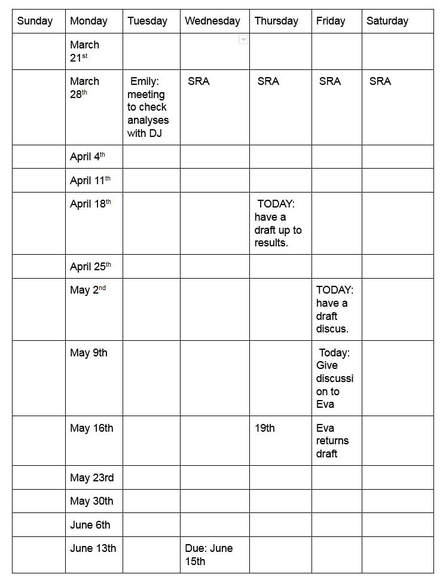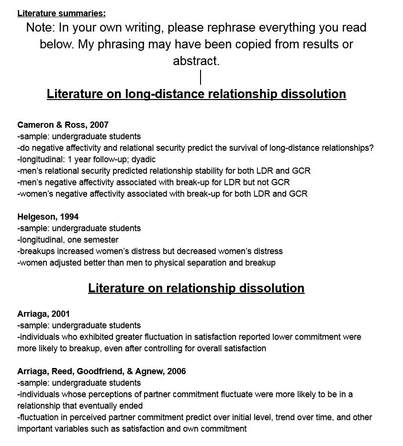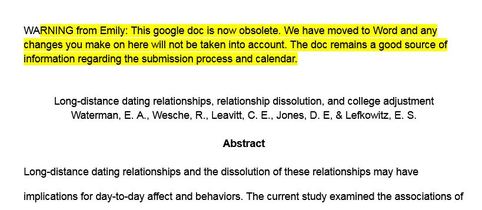Reading the article
Make sure you fully understand the major sections of the article, which generally have an hourglass shape:
a. Introduction. In this section, the authors are describing past work, and how their study fits into past work. When you are writing your own literature review, if you are reading a paper by Brown and Jones, and they cite work by Smith, you should not summarize the authors' summary of Smith and then cite Brown and Jones. If Smith sounds relevant to the paper you're writing, track down Smith and read it directly. When you are reading a journal article for your own literature review, you can use the introduction to find other articles, but you shouldn’t use their summaries of past work for your summary. What eventually will go into your literature review or introduction will focus on the authors’ findings. But, including their conceptual framing and theoretical perspective in your summary for yourself is often helpful.
b. Methods. A description of the sample, procedures, and measures. This section is very useful for fully understanding what the authors did, although you’re unlikely to write much about it in your literature review.
c. Results. An explanation of the statistics performed, and what the authors found. This section is important for learning the main findings of the article. However, many articles use very complicated statistics, and sometimes a reader can get lost in those details. Don't worry if you can't understand everything they did. Focus instead on their explanation of what they found.
d. Discussion. In this section, authors summarize their findings, interpret their findings, link their findings back to the literature, and discuss limitations, future directions, and implications. The summaries in the discussion can be particularly useful if you had trouble following the details in the results section.
e. References: This section is very useful for tracking down articles the authors refer to, that are relevant to your own work.
Summarizing the articles
When I write a literature review, I find it helpful to summarize each article for myself in the same way, in one document, so that I can then work with my summaries, rather than the articles. I provide myself enough information so that I don't frequently need to go back to the article. When I do this, I make sure to PUT THINGS IN MY OWN WORDS so I can work from the summaries and know that I am using my words, not the authors'. This point is critical for avoiding unintentional plagiarism. If you think, I’ll just copy and paste, and change it later, when you come back to it a couple of months later, you may not remember you haven’t already put it in your own words.
I also want to make sure I have enough detail about the methods so I can easily write it into my paper e.g., I need to know if it was only female participants, only one ethnic group, what age the participants were, etc. Here's an example of one I did:
Having these summaries makes the transition to writing the actual paper so much more straightforward, and saves you time in the long run. And I’m all about efficiency in any way possible.
“How to read and summarize research articles first appeared on Eva Lefkowitz’s blog on November 6, 2018.”






 RSS Feed
RSS Feed
